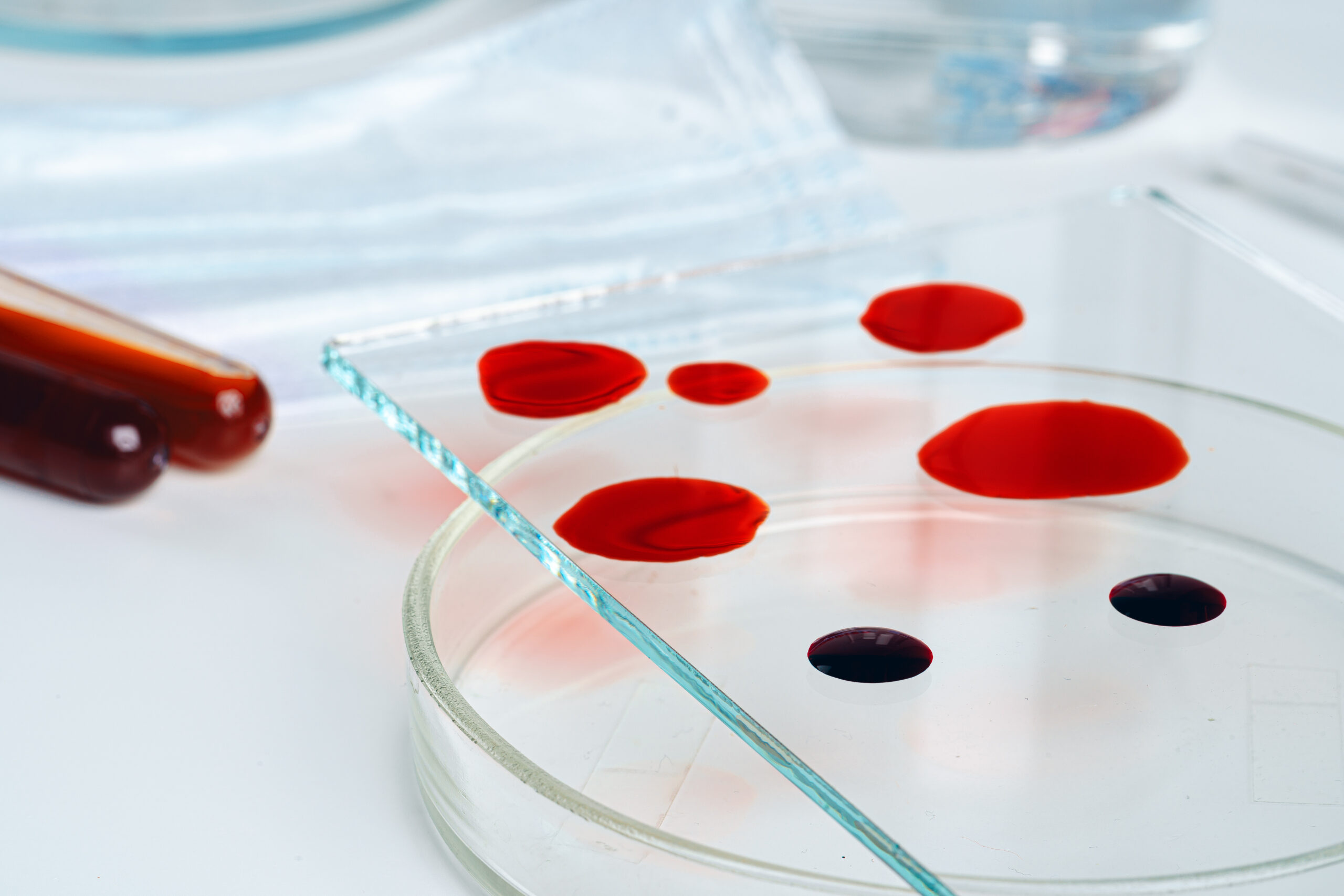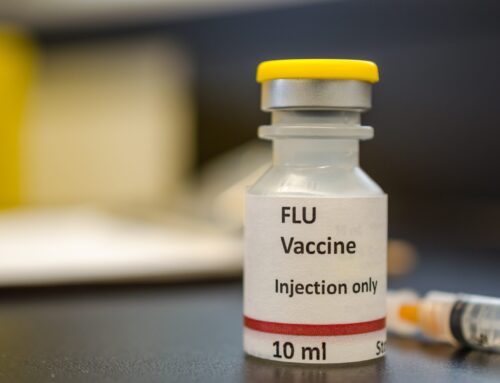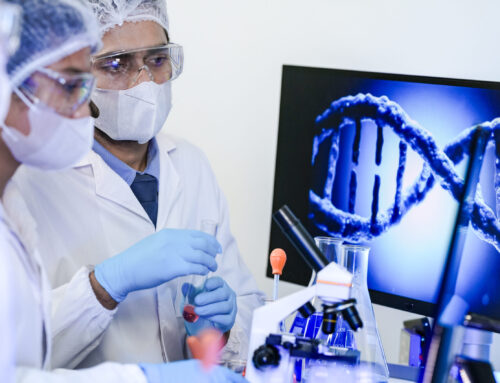Chronic lymphocytic leukemia (CLL) has changed from a disease treated primarily with chemo-immunotherapy to one driven by targeted drugs and precision risk-stratified care. That’s great news: many patients now get highly effective, often less toxic, options — including time-limited regimens that can produce long treatment-free remissions. But the modern landscape is more complex. Below I summarize the current standard approaches, important recent advances, practical safety and monitoring issues, and the questions you should ask your team.
1) The modern treatment landscape — the main drug classes
- BTK inhibitors (BTKi) — oral drugs that block B-cell receptor signaling (examples: ibrutinib, acalabrutinib, zanubrutinib). These are often used as continuous therapy and are frequently chosen for patients with high-risk disease (eg, TP53 disruption) or frail patients who should avoid chemo. BTKis differ in side-effect profiles (atrial fibrillation, bleeding, hypertension are more associated with first-generation ibrutinib; second-generation agents tend to have fewer cardiac events). CLL Society+1
- BCL-2 inhibitor (venetoclax) — a highly active oral agent that encourages programmed cancer-cell death. In combination with the anti-CD20 antibody obinutuzumab, it is used as a fixed-duration (time-limited) frontline regimen (typically 12 months) with durable remissions in many patients — an alternative to continuous BTKi therapy. Long-term follow up shows sustained benefit for many patients after the year-long course. ASH Publications+1
- Anti-CD20 monoclonal antibodies (rituximab, obinutuzumab) are frequently used in combinations (eg, with venetoclax) to deepen and time-limit responses.
- Novel/non-covalent BTK inhibitors — drugs developed to work even when the common resistance mutations to covalent BTKis occur. Pirtobrutinib (Jaypirca) received accelerated FDA approval for certain previously-treated patients with CLL/SLL who have already received a BTKi and a BCL2 inhibitor — giving an important option for patients with multi-drug exposure. Continued approval depends on confirmatory trials. U.S. Food and Drug Administration+1
- Cellular therapies (CAR-T) and other immune strategies — CAR-T has produced dramatic remissions in other blood cancers and shows promise in CLL, but responses can be variable and CAR-T is still largely investigational or limited to specialized centers for CLL; logistical and toxicity issues remain areas of active research. ScienceDirect+1
2) How clinicians choose a regimen — the biology matters
Two genomic/biologic test results are especially influential:
- TP53 disruption (17p deletion and/or TP53 mutation) predicts poor responses to chemo-immunotherapy and pushes clinicians toward targeted agents (BTKi or venetoclax-based strategies). Testing both deletion and mutation is important. PMC+1
- IGHV mutation status also provides prognostic information and can influence decisions (eg, historical benefit of FCR chemo in IGHV-mutated, younger patients — but targeted agents now often supersede chemotherapy choices). Risk-stratification frameworks have been updated around these markers. ASH Publications
Takeaway: before starting therapy you should ensure you have up-to-date biomarker testing (FISH for del(17p), TP53 sequencing, and IGHV status) because these results strongly affect which treatments are likely to work and which to avoid.
3) Important safety and monitoring issues (practical stuff every patient should know)
- Tumor lysis syndrome (TLS) with venetoclax. Venetoclax can cause rapid tumor cell death, and TLS is a real, potentially life-threatening risk particularly when there’s high lymphocyte count or large nodes. The drug is started with a careful multi-week ramp-up and monitoring plan (blood chemistry checks, hydration, uric-acid prophylaxis). Follow the prescribing/ramp-up protocol closely — it reduces TLS but requires coordination with your clinic. venclexta+1
- BTKi side effects and comorbidities. Atrial fibrillation, bleeding risk, and hypertension are among important adverse effects. Different BTKis have different cardiac/bleeding profiles, so your cardiopulmonary history and concurrent medications affect which BTKi (if any) is best. Discuss anticoagulation/antiplatelet use and drug interactions with your team. CLL Society+1
- Drug–drug interactions. Venetoclax and many targeted agents are metabolized by CYP pathways. Strong CYP3A inhibitors can require dose modification of venetoclax or be contraindicated during ramp-up. Always give your oncologist/pharmacist a complete list of prescriptions, supplements, and herbal medicines. RxAbbVie
- Infection risk and vaccines. CLL itself and many treatments impair humoral immunity. Stay current with recommended vaccinations (eg, influenza, COVID-19 per current guidance, shingles where appropriate) and discuss prophylaxis strategies and immunoglobulin replacement if you have recurrent severe infections.
- Monitoring for minimal residual disease (MRD). Trials increasingly use MRD to guide duration and depth of response. Some clinics use MRD to consider stopping or tailoring therapy, but MRD testing and how it should change care is evolving — ask whether MRD testing is available and how your team interprets it.
4) What’s new and promising (research highlights)
- Time-limited targeted combinations. Combining a BTKi with venetoclax (with or without anti-CD20 antibody) is an active area to achieve deep remissions faster and possibly allow finite therapy rather than lifelong BTKi. Early data (AMPLIFY and other studies) show promise; longer follow-up is needed to judge durability and toxicity tradeoffs. ecancer
- Non-covalent (reversible) BTK inhibitors (eg, pirtobrutinib) offer activity for patients who progressed after covalent BTKis and BCL2 inhibitors and are now an approved option in specific previously-treated settings; confirmatory trials are ongoing. U.S. Food and Drug Administration+1
- CAR-T and cellular therapies. Improved CAR-T constructs, earlier use, and combination strategies are under study. CLL presents unique immunologic challenges to CAR-T (T-cell dysfunction in CLL patients), but there are signals of durable remissions in carefully selected patients or in trials combining CAR-T with agents that improve T-cell fitness. Expect more clinical-trial data in coming years. ScienceDirect+1
5) Resistance and relapse — realistic expectations
- Resistance mechanisms include BTK gatekeeper mutations (eg, C481S) and BCL2 pathway changes that render single agents less active. That’s why sequencing (which drug to give first) and developing options that work after one class fails are active research areas. Newer agents and combinations try to preempt or overcome those resistance patterns. OncLive
- Richter transformation (progression to an aggressive lymphoma) remains a rare but serious complication. Rapid clinical changes (fast-growing nodes, B symptoms, rising LDH) should prompt evaluation for transformation.
6) Practical checklist — questions to bring to your oncologist
- What are my cytogenetic and molecular results (FISH del17p, TP53 sequencing, IGHV)? How do they affect your recommendation? PMC+1
- Is treatment recommended now, or is observation (“watch and wait”) appropriate? (CLL often does not require immediate therapy.)
- If you recommend a BTKi vs venetoclax-based approach, why this choice for me specifically? What are the expected toxicities and monitoring needs? (Ask about TLS plan if venetoclax is suggested.) genentech-medinfo
- If I take a BTKi, which one — and what cardiac/bleeding risks or drug interactions should I watch for? CLL Society
- Are there clinical trials for which I might be eligible? (Especially relevant for relapsed disease or high-risk biology.)
- How will infections and vaccinations be handled? Do I need baseline immunoglobulin testing?
- Will we be doing MRD testing, and would the result change how long I’m treated?
- If I relapse, what is the expected next line of therapy and are there options beyond standard drugs (eg, pirtobrutinib or CAR-T in trials/centers)? U.S. Food and Drug Administration+1
7) Where patients can find reliable information & support
- Speak with your treating hematologist/oncologist and their pharmacist for regimen-specific instructions (especially for venetoclax ramp-up and drug interactions).
- Professional guidance: American Society of Hematology (ASH) guidelines and consensus statements (useful for practice updates). American Society of Hematology+1
- Patient groups: CLL Society and local cancer support organizations — helpful for practical lived-experience knowledge and navigating side-effect management.
Bottom line
CLL care today is personalized: targeted oral agents (BTKi, venetoclax) have transformed outcomes, and newer drugs (eg, non-covalent BTK inhibitors) and combination, time-limited strategies expand options — but effective use requires up-front biomarker testing (TP53/17p, IGHV), careful attention to safety (tumor lysis risk with venetoclax; cardiovascular and bleeding risks with BTKi), and an ongoing conversation about sequencing and clinical trials. If you’re facing treatment choices, get clear answers about your molecular testing, the monitoring plan (especially TLS if venetoclax is on the table), and whether trial options might be a fit.
Key references / further reading
- FDA: accelerated approval of pirtobrutinib (Jaypirca) for CLL/SLL (Dec 1, 2023). U.S. Food and Drug Administration
- Long-term results of CLL14: venetoclax + obinutuzumab fixed-duration first-line regimen — durable remissions at 6 years. ASH Publications+1
- BTKi adverse-event profiles and cardiovascular differences between agents (meta-analyses and trial reports). CLL Society+1
- Risk-stratified frontline therapy and the role of genomic testing in decision-making (recent reviews/guidelines). ASH Publications
- Practical TLS guidance and venetoclax ramp-up / monitoring checklist (prescribing info and expert reviews). venclexta+1
Below is a One-Page Checklist for CLL Patients (to bring to appointments)
Before Starting Any Treatment
- Confirm key biomarker tests (“Test Before Treat”)
- FISH panel (for deletions: del 17p, 11q, 13q, trisomy 12) CLL Society+1
- TP53 mutation sequencing (not just deletion) CLL Society+1
- IGHV mutation status (mutated vs unmutated) CLL Society+1
- (Optional/future) MRD (measurable residual disease) testing — ask if your center does this and how results influence duration of therapy CLL Society
- Baseline labs & organ status
- Complete metabolic panel (electrolytes, creatinine, uric acid, phosphate, calcium)
- Baseline kidney function (creatinine clearance or estimated GFR)
- Liver function tests
- CBC with differential
- Viral serologies (e.g. hepatitis B) especially before anti-CD20 or BTKi therapy
- Baseline cardiac evaluation (ECG, echocardiogram) if there’s a history of cardiac disease or if BTKi is considered
- Baseline immunoglobulin levels / evaluate for hypogammaglobulinemia
- Review all concurrent medications, supplements, and herbal products
- Especially those that influence CYP3A, P-gp, anticoagulants, antiplatelets
- Ask your team if dose adjustments or temporary holds are needed
- Infection risk / vaccination planning
- Ensure vaccinations (non-live) are up to date (influenza, pneumococcal, COVID-19, shingles where possible)
- Avoid live vaccines if immunosuppressed
- If you have recurrent infections, ask whether immunoglobulin replacement is considered
- Discuss treatment options & risks
- Ask why a specific therapy is recommended for you (BTKi vs venetoclax regimen vs clinical trial)
- If venetoclax is proposed, ask about the Tumor Lysis Syndrome (TLS) plan (hydration, lab monitoring schedule, hospitalization plan) venclexta+1
- Review side-effect risks (cardiac, bleeding, hypertension for BTKi; neutropenia, infections for venetoclax)
- Ask whether you will be re-tested (e.g. FISH / TP53) prior to future lines of therapy
During Treatment & Monitoring
- Lab monitoring schedule
- If on venetoclax during ramp-up: monitor electrolytes and kidney function at 6–8 hours and 24 hours after each dose escalation step venclexta
- Regular CBC, chemistry panel at intervals your oncologist prescribes
- Watch for signs of TLS, especially early in therapy
- Monitor for cardiac signs, bleeding, hypertension if on BTKi
- Adherence & drug interactions
- Take meds exactly as prescribed
- Keep a list of new medications (even short-term ones such as antibiotics) and check with your oncologist/pharmacist
- If you miss a dose or interrupt therapy, confirm with team how/when to restart
- Infection vigilance
- Report fevers, chills, cough, URIs early
- Avoid exposures, practice good hygiene
- Follow prophylaxis (if prescribed)
- Be aware of neutropenia risk
- Side-effect tracking
- Keep a diary of symptoms (arrhythmia symptoms, bleeding/bruising, GI upset, fatigue)
- Report any new symptoms early
- Imaging / physical exams / follow-up
- Your provider may order scans (CT, PET) only when clinically indicated (not all patients need routine scans) Annals of Oncology+1
- Assess lymph node size, spleen, symptoms
- Clinic visits every 3–6 months (or per your doctor’s plan) Alberta Health Services+2The Pharmaceutical Journal+2
At Relapse / Before Next Line
- Recheck FISH / TP53 / cytogenetics (because disease biology may evolve)
- Ask about newer options (e.g. non-covalent BTK inhibitors like pirtobrutinib, CAR-T, clinical trials)
- Ask whether MRD might guide retreatment options
- Reassess comorbidities, organ function, drug interactions anew
FAQ’s For Patients Newly Diagnosed-Facing Explainer: Treatments & Advances in CLL
What is CLL?
Chronic lymphocytic leukemia (CLL) is a type of blood cancer where a particular white blood cell (the B lymphocyte) grows out of control. Sometimes it can be slow-moving and not cause symptoms for years.
Do I always need treatment right away?
No — many people with CLL are monitored in a “watch & wait” approach. Treatment is started only when certain signs or symptoms appear (for example, dropping blood counts, big lymph nodes or spleen, or “B symptoms” like unexplained fevers or weight loss). Alberta Health Services+1
How do we decide which treatment is right for me?
Doctors use certain tests (biomarkers) to understand the biology of your disease. These tests help predict which treatments will work best:
- FISH (to detect chromosomal deletions)
- TP53 mutation testing
- IGHV mutation status CLL Society+2CLL Society+2
If you have high-risk features (for example, a TP53 mutation), some older chemotherapy options may not work well. Targeted therapy options are preferred instead.
Current standard treatments
- BTK inhibitors (BTKi): pills you take daily (e.g. ibrutinib, acalabrutinib). Great option for many patients, especially those with high-risk disease.
- Venetoclax + anti-CD20 antibody (e.g. obinutuzumab): a combination used for a fixed duration (often one year) — you take venetoclax in a ramp-up schedule to avoid dangerous side effects.
- Newer drugs & combinations:
• Non-covalent BTK inhibitors (e.g. pirtobrutinib) for patients whose disease no longer responds to older BTK drugs
• Combining BTKi + venetoclax is being studied to get deeper responses and possibly avoid indefinite therapy
• Cellular therapy (CAR-T) or immune-based treatments are in trials and may become options down the line
What should I be especially aware of?
- If your plan includes venetoclax, there’s a risk of tumor lysis syndrome (TLS), a sudden breakdown of many cancer cells that can overload the kidneys and cause dangerous electrolyte changes. Your team will do a ramp-up schedule, careful lab monitoring, hydration, and sometimes inpatient observation. venclexta+1
- BTKi drugs have risks like heart rhythm problems, bleeding, and high blood pressure — your health history matters.
- Drug interactions are real — many of these medicines interact with common drugs, supplements, and herbal remedies.
- Your immune system is weakened by CLL and many treatments. Vaccinations (non-live) and infection vigilance are important.
- Disease can change over time. If you relapse, the biology (how your cells behave) might evolve, so re-testing is often done.
Questions to ask your doctor
- Which biomarkers do I have, and how do they influence your recommended treatment?
- Is a clinical trial an option for me?
- What is the plan for managing TLS (if venetoclax is used)?
- How will side effects be monitored and managed?
- When and how often will I be assessed (labs, imaging, physical exam)?
- What will we do if I relapse?






Leave A Comment